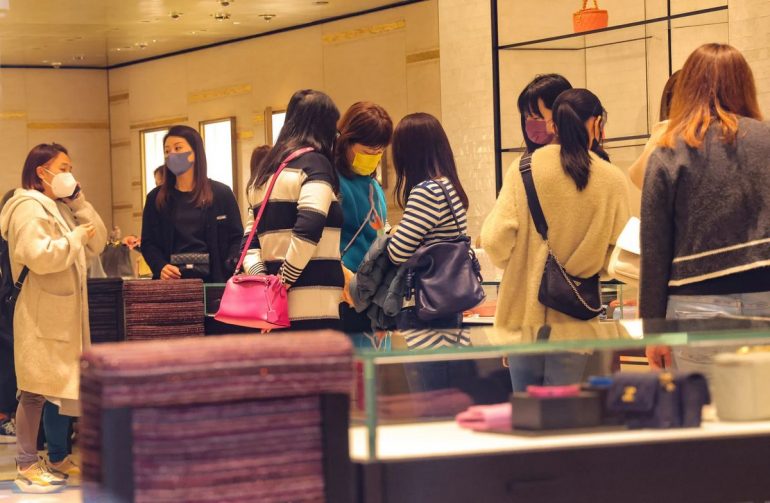In the past decade alone, the price of a classic Chanel bag has risen by 100 per cent, making it an even more sought-after item not just for fashion fans, but for investors as well.
In fact, its price growth has outperformed both the stock market and gold, and shows no sign of slowing down. And it’s not just Chanel – other designer bags, jewellery and watches are all growing in price as time goes by.

So should we invest in luxury bags? Not necessarily, according to the experts.
“In most cases, the answer is no,” says Thomas Kralow, professional investor, financial markets expert and founder of an online learning platform for traders and investors. “The second an item is used, its value instantly begins to decline. Even if kept untouched, the price of a bag can be influenced by changes in fashion trends, consumer preferences, and the state of the economy.”

Kralow continues: “Plus, the market for luxury bags is highly speculative and subject to fluctuations, so unless you have a highly desirable product made by a legacy brand, predicting whether it will retain its value over time is impossible.”
But that seems to be changing slowly in recent years. “The situation has changed, with legacy brands having increased their prices dramatically. Higher price tags typically mean fewer are sold and, with time, this scarcity pushes up resale prices,” he added.

Over the past decade, the stock market has increased by 10 per cent and gold by 21 per cent, but a Chanel bag continued to increase in value, up to 100 per cent, even after they swapped their 24-carat gold buckle for cheaper materials. In 2005, one of the brand’s classic bags costs US$1,650, and these days they’re worth over US$10,000.
“Just recently, actress Christina Ricci sold her collection of Chanel bags to fund her divorce, making use of her luxury goods as a true investment piece rather than accessories,” Kralow revealed.

“And it isn’t just Chanel that’s in demand. In 2000, you could grab a Hermès Birkin for US$4,000 and now you would have to fork out over US$11,000. So yes, luxury bags can be a great investment, but it really depends on the brand and product,” he added.
If you’re determined to invest in your favourite fashion brands, consider keeping these tips in mind …

7 tips from an expert on choosing an investment accessory with long-term profit
Not sure which brands or bags to invest in? Kralow shares his insights:
1. Choose a timeless staple. For example, the Dior Saddle Bag is trendy once every 20 years, while the classic Chanel Flap Bag never goes out of fashion. If you invest in a trendy item, chances are that you won’t be able to sell it for years, if not decades.
2. On the flip side, unique and limited edition luxury pieces can still grow in value, such as the Himalaya Birkin, one of the most expensive bags of all time, which has sold at auction for over US$440,000, or the Ombré Birkin. The prices of these bags will cost you upfront though.
3. Stick with neutral designs and colours, as these are always in demand. It’s a safer bet, as there’s no risk that a specific colour or pattern will go out of style and make selling your investment difficult at a later stage.

4. Be sure to keep the certificate of authenticity and the original packaging, which might help you prove the legitimacy of your item when reselling. Store them away safely and take good care of them, too.
5. Be true to your budget and only buy items that you can afford, even if you’re certain you can make a fortune reselling them. “Bags are a consumer good, and even the price of a Chanel bag won’t always grow exponentially,” says Kralow. “Only spend the money that you have – the last thing you want to do is to spend decades paying off a bad debt.”
6. Also consider investing in other luxury accessories like jewellery and watches. Brands like Rolex and Patek Philippe constantly grow in value, but be prepared to splash out at least US$7,000 to US$10,000.

7. Of course, luxury bags should never be your primary financial investment. They’re a great alternative to stocks and bonds, but they should ideally be a part of a wider and diverse investment portfolio.
Note: This story was originally published on SCMP and has been republished on this website.

